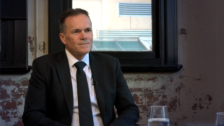The bad news that’s good news for markets: Invesco
Increased unemployment and softening wage growth in the US should give the Federal Reserve all the impetus it needs to start lowering the cash rate in the third quarter, with other central banks likely to follow suit according to analysis from global investment giants Invesco.
In her latest market insights post, Invesco chief global market strategist Kristina Hooper noted that the US economy is starting to noticeably soften, with unemployment now at 4.1 per cent – a ‘significant’ rise from January’s 3.7 per cent figure.
Perhaps more concerning was a further decline in earnings, Hooper noted.
“Most important for the Federal Reserve, in my opinion, is wage growth,” she stated. “Average hourly earnings growth has continued to fall. It is now at 3.9 per cent year-over-year, a marked improvement over 4.35 per cent in January.”
Compounding the labour data is evidence that the demand for products is slowing in the US. The ISM Purchasing Managers’ Index, which indicates the level of demand for products by measuring the amount of ordering activity at the nation’s factories, and is a key indicator of the state of the economy, contracted for the third consecutive month.
“I think this offers enough support for the Fed to be comfortable cutting rates in the third quarter,” Hooper stated. “Markets seem to agree, as stocks and bonds reacted positively to this data. This ‘bad news’ is ‘good news’ for markets, and with good reason.”
What’s happening in the US is staring to occur in other areas as well, Hooper noted. The Canadian economy, for example, is “softening”, with unemployment jumping to 6.4 per cent in June and an expected rate cut from the Bank of Canada in the next month or two. “We’re also seeing some weakening in the eurozone data,” she added, with the caveat that the European Central Bank “will not be as quick to act as the Bank of Canada”. ECB President Christine Lagarde remains more willing to wait and see before making rate cuts.
Broadly, however, Hooper believes the cracks in global economies are opening up and letting out some of the steam that has been heating up interest rates. A tipping point is likely on the horizon, yet central banks, wary of jumping the gun and having to make a stark reversal, are likely to wait until that point has very much arrived before moving on rates. “After all, economies that have heretofore been resilient can quickly change direction – especially under the pressure of high rates,” she said.
It is on the horizon, however, and investment groups are positioning themselves for the twin outcomes of avoiding a serious economic downturn and seeing more capital flow into markets.
“I’m optimistic that central banks are seeing the cracks appearing now in a number of different economies and will act appropriately – which means quickly enough to avoid any serious economic downturn,” Hooper said. “This should be supportive of risk assets.”











